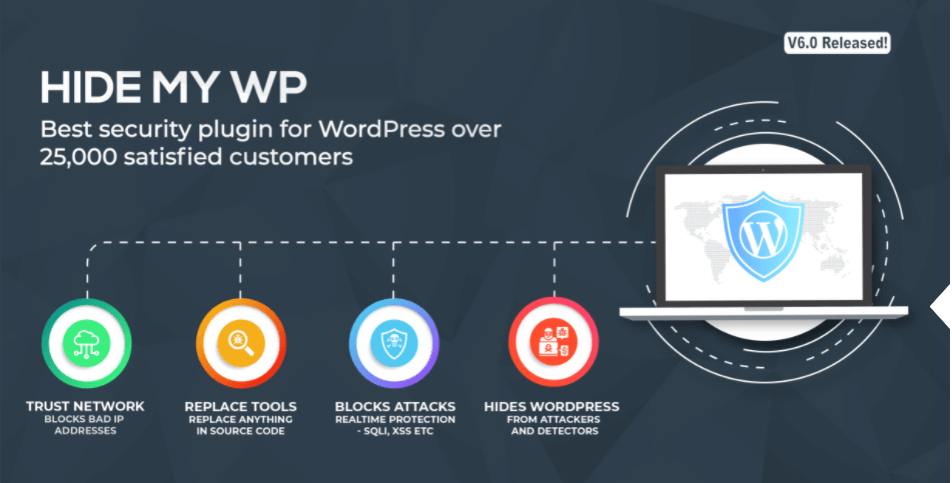Website backdoors are something every WordPress user must be wary of because they can cause a lot of harm to your website. As WordPress evolves, hackers enhance their skillset too. They are always on the lookout to find loopholes that will benefit them in any way.
Further, they do not just attack your website without thinking about future possibilities to access your website. Here’s where backdoors come into play. Website backdoors allow hackers to access your website over and over even after you clean up your website.
Are you worried that your website is prone to attacks even though you get rid of malware from time to time? Then this article is for you. Probably, your website has backdoors open for the hackers to slither into your site unbeknownst to you.

What Are Website Backdoors?
When a hacker attacks your website by exploiting your site vulnerabilities, there are high chances that he leaves behind a piece of code on your website. What is the purpose of this code?
Simple, this code will assist him in accessing your website in the future again. Hence, this code is known as the “backdoor” because it provides the hacker a sneaky path into your site.
The problem here is that the cleanup process does not remove this code most of the time. Furthermore, the post-hack cleanup gives the user a false sense of security, and a hacker can catch him off guard through the backdoors.
Why Are Website Backdoors Undetectable?
Earlier, I have mentioned that many users overlook the backdoor code during the malware removal process after any web attack. But, why? Backdoors are malware code too, so how is it different from other malicious codes?
Okay, here’s the thing. Hackers create backdoors in a way they could pass as a safe and non-malicious code. Also, these codes are loud and do not attract much attention. Further, the backdoor code can be password-protected or encrypted.
For you to notice backdoors, you must be well-aware of all your website files, folders, and their contents. This knowledge will help you spot the code that seems out of place on your website.
Different Types Of Website Backdoors
You can find many types of website backdoors; here are some:
Complex Website Backdoors
The complex backdoors are loud. Out of all backdoors, they are easily detectable if you look for them.
Short Website Backdoors
The short backdoors are very simple and are not as detectable as complex backdoors. Since they are small, there are high chances that you might overlook them.
CMS Specific Website Backdoors
CMS-specific backdoors get made to suit a particular content management system.
How Can Website Backdoors Affect Your Website?
Hackers can benefit a lot from backdoors, and you might face the following consequences:
- Redirection of your website users to a different site will result in a loss of traffic.
- You might find pop-ups on your website prompting your visitors to install random software.
- Hackers may use this opportunity to target your website users with email spam.
- Also, they could store files on your website, which slows down your website.
- Further, they can steal the credit card information of your website visitors.
- They may steal the user data and sell it on the dark market.
- Moreover, your SEO ranking will drastically fall.
- Or worse, you could get your website blacklisted or suspended.
How Can You Remove Website Backdoors?
So far, we have learned about how negatively website backdoors can affect your website. So follow these steps to remove backdoors from your WordPress website:
Check The Files
It’s no secret that hackers inject code into your website files. So, the best way to figure out if these files have malware is by comparing them with backup files. We all know that backing up websites is crucial for website security, so I assume you all have backups.
You must compare all the plugins, themes, and core files to the backup files. Firstly, replace the infected ones. Secondly, all files have a checksum, which will help you find if the files are malware-free.
Block Backdoors
Hacking is not a new practice. It’s been active for so long that many of their tricks are out in the open already. Many backdoors are already discovered. All you need to do is block them. Doing this will help you stop the attempts of hackers creating backdoors on your website.
How To Prevent Website Backdoors?
Hackers can’t insert backdoors if they didn’t hack your website already. The best way to prevent website backdoors is by avoiding the most common security mistakes users make. But, here are a few ways in which you can avoid website backdoors:
Avoid Nulled Plugins/Themes
It is also crucial to avoid using nulled plugins and themes because they can carry malicious code. Installing them on your WordPress will compromise your website security.
Learn more: Why You Must Avoid Nulled WordPress Plugins & Themes
Use A Firewall
Firewalls are the barriers that protect your website from outside threats. Firewalls will verify if the IP address requesting to visit your website is harmful. If the IP address is known to be malicious, the firewall will block that IP address and restrict it from accessing your website. It is easier to use a security plugin like the Hide My WP because it has a firewall.
Install Updates
Most people tend to ignore updates, but they are necessary for website security. You must make sure to install updates of your WordPress plugins, themes, and core software whenever possible. The updates have the security fixes to the known vulnerabilities and help enhance your website security.
Use A WordPress Security Plugin
It can be hard to ensure that the website is always well protected. Hence, people hand over this job to security plugins. They help secure your website all day and take off the burden from you. The Hide My WP is a security plugin that can always protect your website from threats. Here are some features of the Hide My WP:

- It lets you hide the default Login Page of your website to escape brute force attacks/bots.
- You can use its firewall to block modern-day attacks like XSS, SQL injection, CSRF, Command Injection, and many more.
- The plugin helps block spam.
- You can change permalinks easily with the help of this plugin.
- It allows you to change any elements like the text/URLs of your website source code.
- Also, you can hide the default WordPress paths like /inc, /inc/themes, /ext, /inc/uploads, /other, etc.
Conclusion
If your website got hacked once, imagine it happening again and again. It’s a nightmare, no? Well, if you don’t get rid of the website backdoors, you’ll have to live that nightmare.
Website backdoors are a piece of code that provides hackers the means to access your website even after you clean the mess of his attack. Most website backdoors are safely hidden within the website that most users don’t acknowledge its presence until it’s too late.
If you do not want to make the same security mistake as others, take the preventive steps mentioned in the article and secure your WordPress website.
